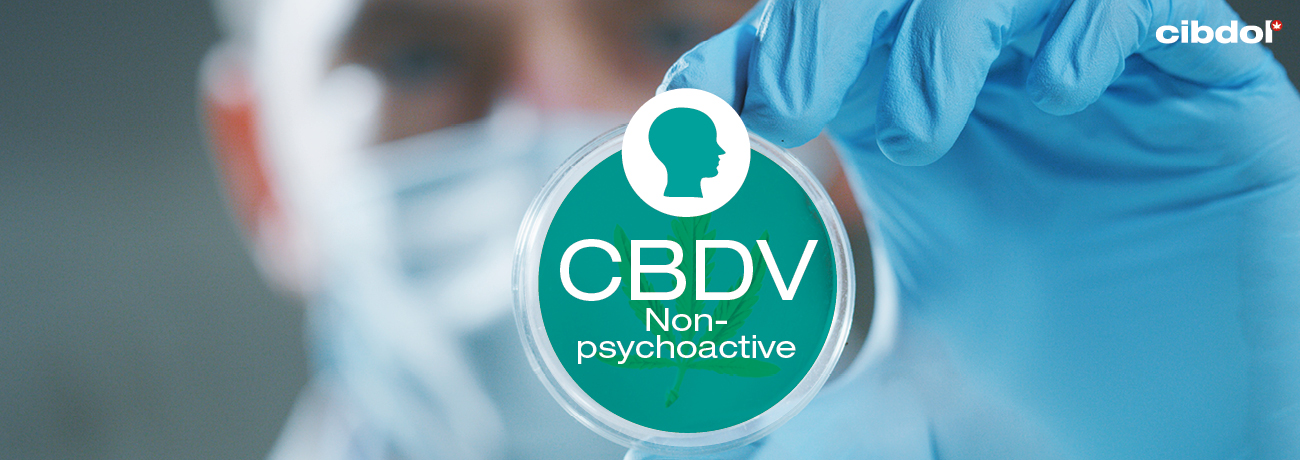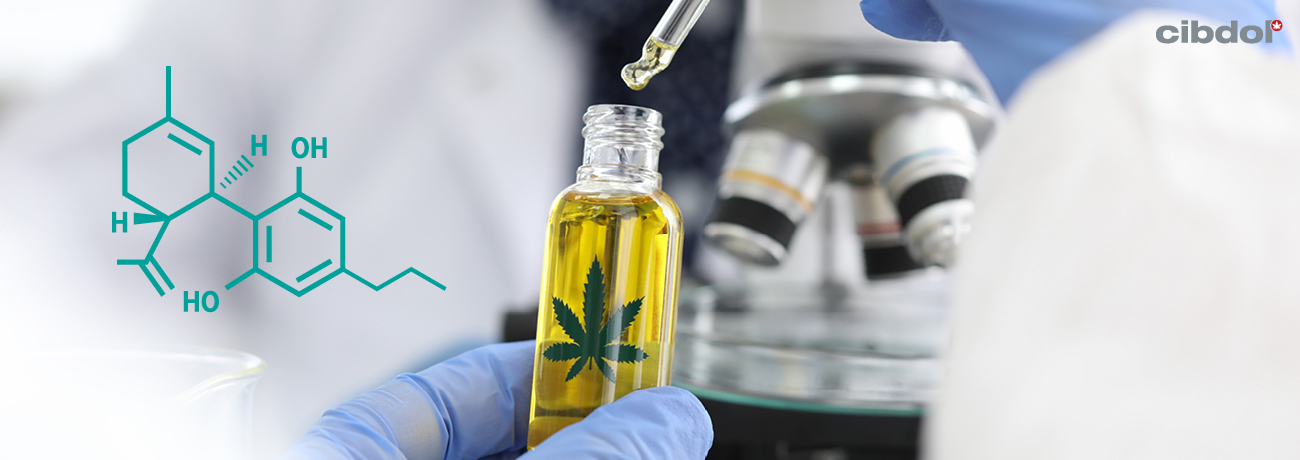What Is CBDV (Cannabidivarin)?

Keep reading to find out the key attributes of CBDV, a precursor to CBD. Below, you'll find a summary of research into its potential effects and details on its legal status.
What is CBDV?
CBDV is the result of CBGA's chemical reaction with selected enzymes. Cannabidivarin is also the precursor molecule to CBD, as the cannabinoid has not yet undergone decarboxylation. And, just like CBD, CBDV won't induce a high, making it a viable candidate for medical research. Thresholds of CBDV appear more significant in selected subspecies of cannabis (landrace strains).
Side effects
At present, there are no known adverse side effects associated with CBDV use in humans. Potential side effects include those associated with CBD use, such as dry mouth and low blood pressure.
Summary of CBDV
• Precursor to CBD
• High levels of CBDV reported in strains of C. indica
• Appears to be an effective anticonvulsant
• Non-psychotropic
• Dr L. Vollner identified CBDV for the first time in 1969
• Influences TRPV1 receptors in the central and peripheral nervous system
Supporting research

Like other raw cannabinoids, CBDV has a limited pool of supporting research. This is due to the difficulty of isolating cannabidivarin, and to regulatory issues associated with researching cannabinoids.
However, in 2014, GW Pharmaceuticals completed a phase 1 clinical trial of cannabinoid treatment in adult patients with epilepsy. They aim to produce an approved medication using CBDV (GPW42006) either in isolation or alongside standard anti-epileptic drugs.
A 2019 study[1] published in the British Journal of Pharmacology examined the effects of several cannabinoids on an animal model of Duchenne muscular dystrophy (DMD). Symptoms of DMD include muscle weakness, trouble standing up, and muscle loss. The researchers found that CBD and CBDV "prevented the loss of locomotor activity, reduced inflammation and restored autophagy", and could help regenerate or renew damaged cells.
A collaborative review[2] between Albert Einstein College of Medicine and GW Pharmaceuticals tested CBDV in children with Autism Spectrum Disorder. The medication was compared to a placebo as part of a controlled, double-blind, randomised study. The review suggested that not only could CBDV be a "promising treatment for ASD", but that the cannabinoid engaged in "multiple mechanisms dysfunctional in ASD".
A 2013 study[3] published in the British Journal of Pharmacology examined whether THCV and CBDV could reduce toxin-induced nausea in animals. Results indicated that both cannabinoids suppressed nausea through their influence on CB1 receptors. Importantly, both CBDV and THCV acted as inverse agonists, which meant that binding with CB1 receptors did not cause the side effects commonly associated with their activation.
Two separate studies, one[4] in the Journal of Psychopharmacology (2019) and the other[5] published in Neuropharmacology (2018), investigated the impact of CBDV on an animal model of Rett syndrome (RTT). Both acknowledged an improvement in areas including sociability, general health, brain weight, and GPR55 level in the hippocampus (the part of the brain responsible for emotion and memory).
However, results from the 2019 study found that the "effect is only transient", and more research was needed to understand how CBDV could provide a long-term delay to neurological defects.
Legal status of CBDV
Cannabidivarin is not scheduled as part of the Convention on Psychotropic Substances. Although the cannabinoid is considered legal, its prevalence in landrace C. indica strains makes isolating large quantities difficult due to regulatory restrictions.
[1] Vigli, D., Cosentino, L., Raggi, C., Laviola, G., Woolley-Roberts, M., & de Filippis, B. (2018). Chronic treatment with the phytocannabinoid Cannabidivarin (CBDV) rescues behavioural alterations and brain atrophy in a mouse model of Rett syndrome. Neuropharmacology, 140, 121–129. https://doi.org/10.1016/j.neuropharm.2018.07.029 [Source]
[2] Albert Einstein College of Medicine, INC, & Hollander, E. (2018, August). Cannabidivarin (CBDV) Versus Placebo in Children with Autism Spectrum Disorder (ASD) (No. W81XWH-17-1–0253). https://apps.dtic.mil/dtic/tr/fulltext/u2/1064689.pdf [Source]
[3] Rock, E. M., Sticht, M. A., Duncan, M., Stott, C., & Parker, L. A. (2013). Evaluation of the potential of the phytocannabinoids, cannabidivarin (CBDV) and Δ9-tetrahydrocannabivarin (THCV), to produce CB1receptor inverse agonism symptoms of nausea in rats. British Journal of Pharmacology, 170(3), 671–678. https://doi.org/10.1111/bph.12322 [Source]
[4] Zamberletti, E., Gabaglio, M., Piscitelli, F., Brodie, J. S., Woolley-Roberts, M., Barbiero, I., Tramarin, M., Binelli, G., Landsberger, N., Kilstrup-Nielsen, C., Rubino, T., di Marzo, V., & Parolaro, D. (2019). Cannabidivarin completely rescues cognitive deficits and delays neurological and motor defects in male Mecp2 mutant mice. Journal of Psychopharmacology, 33(7), 894–907. https://doi.org/10.1177/0269881119844184 [Source]
[5] Vigli, D., Cosentino, L., Raggi, C., Laviola, G., Woolley-Roberts, M., & de Filippis, B. (2018). Chronic treatment with the phytocannabinoid Cannabidivarin (CBDV) rescues behavioural alterations and brain atrophy in a mouse model of Rett syndrome. Neuropharmacology, 140, 121–129. https://doi.org/10.1016/j.neuropharm.2018.07.029 [Source]
[1] Vigli, D., Cosentino, L., Raggi, C., Laviola, G., Woolley-Roberts, M., & de Filippis, B. (2018). Chronic treatment with the phytocannabinoid Cannabidivarin (CBDV) rescues behavioural alterations and brain atrophy in a mouse model of Rett syndrome. Neuropharmacology, 140, 121–129. https://doi.org/10.1016/j.neuropharm.2018.07.029 [Source]
[2] Albert Einstein College of Medicine, INC, & Hollander, E. (2018, August). Cannabidivarin (CBDV) Versus Placebo in Children with Autism Spectrum Disorder (ASD) (No. W81XWH-17-1–0253). https://apps.dtic.mil/dtic/tr/fulltext/u2/1064689.pdf [Source]
[3] Rock, E. M., Sticht, M. A., Duncan, M., Stott, C., & Parker, L. A. (2013). Evaluation of the potential of the phytocannabinoids, cannabidivarin (CBDV) and Δ9-tetrahydrocannabivarin (THCV), to produce CB1receptor inverse agonism symptoms of nausea in rats. British Journal of Pharmacology, 170(3), 671–678. https://doi.org/10.1111/bph.12322 [Source]
[4] Zamberletti, E., Gabaglio, M., Piscitelli, F., Brodie, J. S., Woolley-Roberts, M., Barbiero, I., Tramarin, M., Binelli, G., Landsberger, N., Kilstrup-Nielsen, C., Rubino, T., di Marzo, V., & Parolaro, D. (2019). Cannabidivarin completely rescues cognitive deficits and delays neurological and motor defects in male Mecp2 mutant mice. Journal of Psychopharmacology, 33(7), 894–907. https://doi.org/10.1177/0269881119844184 [Source]
[5] Vigli, D., Cosentino, L., Raggi, C., Laviola, G., Woolley-Roberts, M., & de Filippis, B. (2018). Chronic treatment with the phytocannabinoid Cannabidivarin (CBDV) rescues behavioural alterations and brain atrophy in a mouse model of Rett syndrome. Neuropharmacology, 140, 121–129. https://doi.org/10.1016/j.neuropharm.2018.07.029 [Source]












